June Prize Spotlight
Congratulations to the following 2023 prize recipients who will be recognized at SIAM conferences this month:
- Samuel Burer and Renato D.C. Monteiro – SIAM Activity Group on Optimization Test of Time Award
- Damek Davis and Dmitriy Drusvyatskiy – SIAM Activity Group on Optimization Best Paper Prize
- Eileen R. Martin – SIAM Activity Group on Geosciences Early Career Prize
- Nate Veldt – SIAM Activity Group on Applied and Computational Discrete Algorithms Early Career Prize
Samuel Burer and Renato D.C. Monteiro
Samuel Burer, University of Iowa, and Renato D.C. Monteiro, Georgia Institute of Technology (Georgia Tech), are the recipients of the 2023 SIAM Activity Group on Optimization Test of Time Award for their paper, “A nonlinear programming algorithm for solving semidefinite programs via low-rank factorization,” Mathematical Programming Series B, No. 95, pp. 329-357, (2003), which has revolutionized computational methods for solving certain classes of large scale semidefinite programming problems.
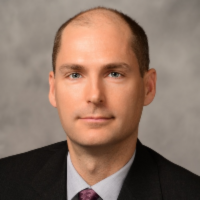
They presented the paper in a dedicated session at the 2023 SIAM Conference on Optimization (OP23), which took place May 31 – June 3, 2023, in Seattle, Washington, U.S.
This is the first time that the SIAM Activity Group on Optimization has awarded this prize, and will continue presenting the award every three years to an individual or group of researchers for an outstanding single piece of work that has had significant and sustained influence on the field of optimization over a time period of at least 10 years preceding the year of the award.
Dr. Burer is the Tippie Rollins Professor in the department of business analytics at the University of Iowa. He received his Ph.D. from the Georgia Institute of Technology, and his research focuses on convex optimization, especially semidefinite and copositive programming. He is the 2020 recipient, joint with Renato D.C. Monteiro, of the INFORMS Computing Paper Prize, and his work has been supported by grants from the National Science Foundation (NSF), including the CAREER award. He currently serves as an area editor of Operations Research and as an associate editor for SIAM Journal on Optimization. He also serves as treasurer of the Mathematical Optimization Society and is a past vice chair of the SIAM Activity Group on Optimization. Learn more about Dr. Burer.
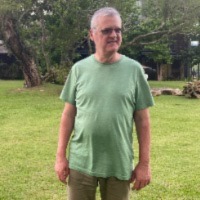
Dr. Monteiro is Coca-Cola Foundation Professor in the H. Milton Stewart School of Industrial and Systems Engineering at Georgia Tech. He received his Ph.D. from the University of California at Berkeley in 1988 and his research interests lie in the area of continuous optimization and complexity analysis of algorithms. He has been supported by grants from NSF, the Office of Naval Research, and the Air Force Office of Scientific Research. He has served as associate editor for Operations Research, INFORMS Journal of Computing, Mathematical Methods of Operations Research, and Mathematics of Operations Research. He has also served as vice-chair and chair of the INFORMS Optimization Section. He has twice been awarded the INFORMS Computing Society Paper Prize, jointly with Yin Zhang (2001) and with Dr. Burer (2022). Learn more about Dr. Monteiro.
Q: Why are you both excited to receive the award?
A: It is a tremendous honor to receive this award. The core research idea of using a low-rank factorization to represent a positive semidefinite variable has had a sustained impact that we could have never imagined.
Q: Could you tell us about the research that won your team the award?
A: Solving large-scale semidefinite programs (SDPs) can be challenging. Building on prior research, our idea was a first-order SDP algorithm that uses a low-rank factorization of the positive semidefinite variable, thus saving time and space. The downside of this factorization was nonconvexity, but empirically this did not affect convergence of our algorithm to a global optimal solution. Subsequent research has filled in important theoretical gaps and applied the low-rank idea in many applications.
Q: What does your team's work mean to the public?
A: Modern algorithms need to scale well to ever larger data sets, and our research helps with just such scaling issues. As the public's interest in and reliance upon algorithms continues to grow, our research is helping extend the benefits of algorithmic research to society.
Q: What does being a member of SIAM mean to your team?
A: As researchers, we feel supported by SIAM, particularly its journals and conferences. We also see SIAM as a key outlet for helping the research community, e.g., by serving in societal positions.
Damek Davis and Dmitriy Drusvyatskiy
Damek Davis, Cornell University, and Dmitriy Drusvyatskiy, University of Washington, are the recipients of the 2023 SIAM Activity Group on Optimization Best Paper Prize for their paper, "Stochastic Model-Based Minimization of Weakly Convex Functions,” SIAM Journal on Optimization, Vol. 29, No. 1, pp. 207–239, (2019), which for the first time establishes convergence rates of a broad family of algorithms for the stochastic optimization of weakly convex functions.
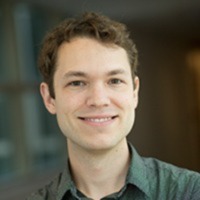
They presented the paper in a dedicated session at the 2023 SIAM Conference on Optimization (OP23), which took place May 31 – June 3, 2023, in Seattle, Washington, U.S.
The SIAM Activity Group on Optimization awards this prize every three years to the author(s) of the most outstanding paper, as determined by the prize committee, on a topic in optimization published in the four calendar years preceding the award year.
Dr. Davis is an associate professor of Operations Research at Cornell University. He received his Ph.D. in mathematics from the University of California, Los Angeles in 2015. His research focuses on the interplay of optimization, signal processing, statistics, and machine learning. Learn more about Dr. Davis.
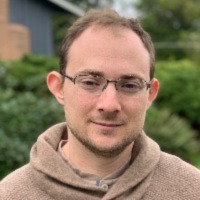
Dr. Drusvyatskiy received his Ph.D. from the operations research and information engineering department at Cornell University (2013), followed by a post-doctoral appointment in the combinatorics and optimization department at the University of Waterloo (2013-2014). He joined the mathematics department at University of Washington as an assistant professor (2014), promoted to an associate professor (2019), and then to a full professor (2022). Dmitriy's research broadly focuses on designing and analyzing algorithms for large-scale optimization problems, primarily motivated by applications in data science. Learn more about Dr. Drusvyatskiy.
Q: Why are you both excited to receive the award?
A: We're thrilled to receive this award and grateful for the recognition of our work. It's rewarding to know our work has been useful, and we're excited to share our contributions with the wider optimization community.
Q: Could you tell us about the research that won your team the award?
A: This work designs and analyzes streaming algorithms for stochastic optimization problems, specifically focusing on cases where the objective function is neither smooth nor convex. Nonsmooth, nonconvex problems frequently arise in contemporary machine learning applications, particularly in the fitting of neural networks with ReLU activations. While streaming algorithms are well-understood for smooth or convex functions, the nonsmooth, nonconvex domain remains relatively underexplored. A significant challenge in adapting classical tools to nonsmooth, nonconvex problems is that traditional measures of algorithmic progress, or Lyapunov functions, are no longer informative. In fact, unlike smooth or convex optimization, neither the norm of the gradient nor the objective value necessarily tends to zero along the iterate sequence.
The key insight of this work is the recognition that for weakly convex problems, which serve as a steppingstone to understanding neural networks, stochastic gradient methods can be viewed as approximate gradient descent on the Moreau-smoothing of the objective function. This insight led to a simple proof of the method's complexity and has been used in several subsequent works to analyze more challenging settings, including minimax optimization problems.
Q: What does your team's work mean to the public?
A: Societal decisions are increasingly being made based on algorithmic output. By establishing a baseline guarantee for an algorithm's performance, we can ensure that it is functioning as intended and delivering accurate results within a given timeframe. This is particularly important in the context of machine learning applications, where optimization algorithms play a crucial role in training models that can have far-reaching consequences in various domains.
Q: What does being a member of SIAM mean to your team?
A: We enjoy being members of the SIAM community and always look forward to attending SIAM conferences!
Eileen R. Martin
Eileen R. Martin, Colorado School of Mines and Virginia Tech, is the recipient of the 2023 SIAM Activity Group on Geosciences Early Career Prize for her development of computational and mathematical tools for widespread (ambient) seismic imaging with massive seismic arrays, particularly for environmental and infrastructure problems.

Dr. Martin will give a talk at the 2023 SIAM Conference on Mathematical & Computational Issues in the Geosciences (GS23), taking place June 19 - 22, 2023 in Bergen, Norway. The talk will take place on Wednesday, June 21, at 11:00 a.m. CEST.
Established in 2008, the SIAM Activity Group on Geosciences awards this prize every two years to one individual in their early career in the field of geosciences for distinguished contributions to the field in the three calendar years prior to the award year.
Dr. Martin is an assistant professor at Colorado School of Mines and Virginia Tech. Her research focuses on applied math and computational science for applications in geophysics and geotechnical engineering. After growing up in central Texas, she went to the University of Texas Austin where she got a bachelor’s with a double major in math and computational physics. She then moved to Stanford University, where she got her master’s in geophysics; Dr. Martin also earned a Ph.D. in computational and mathematical engineering, which she pursued in the Stanford Exploration Project and as an affiliate at Lawrence Berkeley National Laboratory. Learn more about Dr. Martin.
Q: Why are you excited to receive the award?
A: Receiving this award creates a nice reminder to check-in with my past teachers, mentors, and collaborators – including past student researchers – and to thank them, so I'm most excited to do that! More selfishly, I will use this award to justify a few fancy dinners, so I'm excited about good food with good friends.
Q: Could you tell us about the research that won you the award?
A: The motivation for this research is the ability to monitor changes in the Earth's near-surface, often the top 100 meters or less. However, we need techniques that are scalable with respect to both data acquisition and data analysis. The past 20 years brought us applied math techniques that allowed us to make sense of longer recordings of low-quality, cheap-to-collect seismic data. This was originally applied to a handful of high-quality sensors, but the past 10 years brought us truly massive arrays of new seismic sensors.
The rapid uptick in data volumes pushed our computational methods to the breaking point, and often the data were not even being fully analyzed after collection. This research has provided more scalable algorithms that allowed us to more rapidly analyze these low-quality seismic data, and in some cases, has even reduced the hardware required from a cluster to a standard laptop.
Q: What does your work mean to the public?
A: This research has reduced the human power and computational power required to image what's beneath the Earth's surface. By lowering the costs to image the Earth's subsurface, we can open the possibility for subsurface imaging to inform solutions to important but low-profit or no-profit environmental and safety issues. My group has been lucky to apply this research directly to several applications including: monitoring permafrost thaw in polar regions, monitoring seismicity related to underground mining, monitoring the movement of a glacier, pinpointing variability in how the ground shakes in response to earthquakes, and other applications.
Q: What does being a member of SIAM mean to you?
A: I love that SIAM is a space where we can really focus on moving computational and mathematical methods forwards, and we have some impact in mind, but often discussions with colleagues end up leading to totally new applications of these methods. I've been lucky to have some wonderful relationships built through SIAM with friends who I never would have met through the geoscience societies I am part of, because SIAM creates an environment that actively encourages cross-pollination of ideas across specific disciplines and sub-disciplines.
Nate Veldt
Nate Veldt, Texas A&M University, is the recipient of the 2023 SIAM Activity Group on Applied and Computational Discrete Algorithms Early Career Prize for his outstanding, influential, and potentially long-lasting contributions, including both algorithms and implementations, to clustering and discrete optimization, and especially to graph and hypergraph clustering and partitioning.
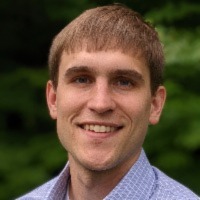
Dr. Veldt gave a talk at the 2023 SIAM Conference on Applied and Computational Discrete Algorithms (ACDA23), which took place May 31 – June 2, 2023, in Seattle, Washington, U.S.
This is the first time that the SIAM Activity Group on Applied and Computational Discrete Algorithms has awarded this prize, and will continue presenting the award every two years to an outstanding early career researcher in the field of applied and computational discrete algorithms (ACDA) for distinguished contributions to the field in the six calendar years prior to the award year.
Dr. Veldt is an assistant professor in the department of computer science and engineering at Texas A&M University. He is also an affiliated member of the Texas A&M Institute of Data Science (TAMIDS) and a recipient of the 2022 TAMIDS Career Initiation Fellowship. He obtained a bachelor's degree in mathematics from Wheaton College and a Ph.D. in mathematics with a concentration in computational science from Purdue University. As a graduating Ph.D. student in 2019, he received the Dimitris Chorafas Foundation Award for his dissertation research on optimization frameworks for graph clustering. Prior to his current position at Texas A&M, he spent two years as a postdoctoral researcher in the Center for Applied Mathematics at Cornell University. His research focuses on combinatorial algorithms and discrete optimization for data science and network analysis. Learn more about Dr. Veldt.
Q: Why are you excited to receive the award?
A: I am delighted and honored that that my research is being recognized by the applied mathematics community in this way, and I'm especially excited that this is happening in the context of the SIAM Activity Group on ACDA. The leadership of this activity group has been doing a wonderful job fostering research on combinatorial algorithms and their applications. I have really enjoyed all the opportunities I have had so far to attend ACDA events and interact with other members, so I am especially happy to receive this award and have presented my work at the recent SIAM ACDA conference.
Q: Could you tell us about the research that won you the award?
A: The award recognizes my research on graph and hypergraph clustering, which are fundamental algorithmic tasks with applications in areas such as scientific computing, machine learning, and data mining. Clustering a graph means partitioning its nodes into well-connected components in such a way that few edges are cut, meaning that they cross between two clusters. The problem is more nuanced and challenging in hypergraphs, since a hyperedge can involve an arbitrary number of nodes and can therefore be split across clusters in many different ways. My recent SIAM Review paper, "Hypergraph Cuts with General Splitting Functions", co-authored with Austin Benson and Jon Kleinberg, presents new algorithms and hardness results for a broad class of hypergraph cut problems. One of our main results was to prove exact conditions under which a generalized minimum hypergraph cut objective can and cannot be reduced to a graph cut problem. In follow-up work, we have been applying variants and generalizations of our hypergraph cut algorithms to many different clustering and data analysis tasks, including image segmentation problems, detecting related retail products in a large e-commerce dataset, and finding related posts in large online Q&A forums.
Q: What does your work mean to the public?
A: Power grids, social networks, transportation networks, the world wide web – these are all systems of interconnected entities that we are able to model and analyze using the powerful methods and theoretical results developed in network science and graph theory. My research contributes especially to a growing body of work on higher-order network science, where the goal is to better model and analyze complex datasets and systems characterized by multiway interactions, rather than just pairwise interactions like the ones modeled by a graph. For example, social interactions often happen in groups, chemical reactions usually involve more than two substances at once, and biological processes involve multiway interactions among genes or proteins. Advances in hypergraph algorithms provide new ways to analyze these and many other systems of higher-order interactions that show up in diverse application domains.
Q: What does being a member of SIAM mean to you?
A: Being a member of SIAM has been a very valuable aspect of my academic career ever since I joined as a Ph.D. student. My first SIAM conference was the 2018 SIAM Annual Meeting and the co-located Workshop on Network Science back when I was still in graduate school. Since then, I have participated in one or two SIAM conferences every year, and these have always provided valuable opportunities for networking with like-minded researchers, hearing about their latest work, and disseminating my own research. I also have a great appreciation for the wide selection of high-quality journals that SIAM maintains, as well as all the other resources and programs – activity groups, student chapters, travel awards, etc. – that are such a great benefit to SIAM members.
Stay Up-to-Date with Email Alerts
Sign up for our monthly newsletter and emails about other topics of your choosing.



